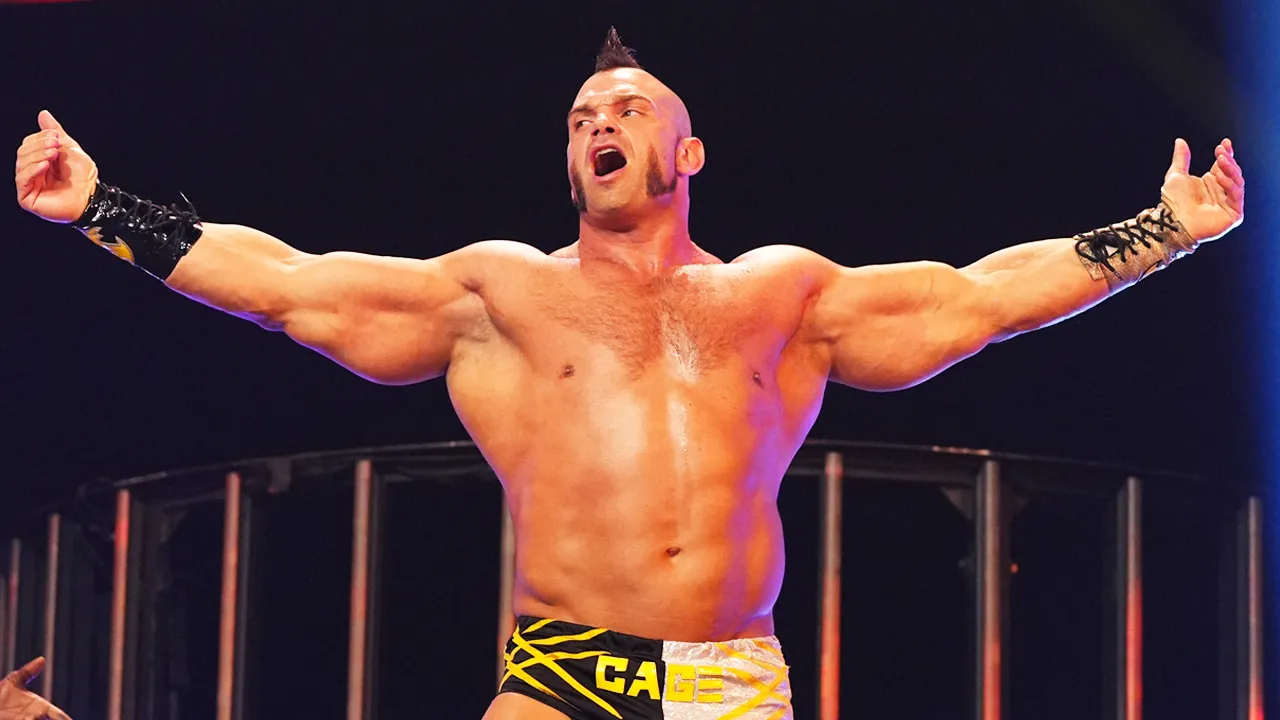
On a recent edition of the “Wilde On” podcast, former FTW Champion Brian Cage spoke to Taylor Wilde about toning down his high-flying spots in AEW.
You can check out some highlights from the podcast below:
On toning down his style in AEW: “Also, a lot of people thought that I was this crazy high flyer. I’ve always been athletic and stuff, but I actually did more flips and tricks so to speak as I got bigger more so than I was smaller. I kinda just started trying it. I remember I did some stuff in FCW when I got signed when I was smaller, but just on the crash pad messing around, but I never really incorporated it in any of it or much of it. It really wasn’t until 2013 or 2014 until I started doing stuff.”
On why he started slowing down in the ring: “There was one six man match where I was like, ‘I’m gonna moonsault to the outside’ and everyone’s like, ‘What?’ It got such a huge reaction that I just kinda kept doing stuff and it would be so over because it’s my size doing it. Then I started doing it like all the time, way too often just to stand out and get more over. Now I do it very rarely. I think I’ve done a total of like three dives in my AEW career. I know everybody knows I can do it but since I don’t ever do it, when I do something, it’s like it’s the first time so it gets more of a reaction.”
In a recent episode of the “Wilde On” podcast, former FTW Champion Brian Cage discussed the decision to tone down his high-flying style in All Elite Wrestling (AEW). Cage, known for his athleticism and impressive aerial maneuvers, explained that he actually incorporated more flips and tricks into his moveset as he gained size and strength.
Contrary to popular belief, Cage revealed that he didn’t start incorporating high-flying spots into his matches until around 2013 or 2014. Prior to that, he had only experimented with such moves on crash pads during his time in FCW (Florida Championship Wrestling). However, it was during a six-man match where he decided to perform a moonsault to the outside of the ring that he realized the impact it had on the audience.
The reaction from the crowd was overwhelming, and Cage recognized that his size and ability to execute such moves made them even more impressive. As a result, he began incorporating these high-flying spots more frequently into his matches to stand out and gain popularity. However, he soon realized that by doing them too often, they lost their impact and became less special.
Cage made the conscious decision to slow down and limit the number of high-flying moves he performed in AEW. He explained that he has only executed a total of three dives throughout his AEW career. By sparingly using these moves, Cage ensures that when he does perform them, they feel fresh and exciting for the audience. It creates a sense of anticipation and surprise, resulting in a greater reaction from the crowd.
The strategy of toning down his high-flying style has proven successful for Cage in AEW. By strategically choosing when to incorporate these moves, he maintains their impact and keeps the audience engaged. It showcases his versatility as a wrestler, as he can adapt his style to fit the needs of the match and tell a compelling story in the ring.
Cage’s decision to limit his high-flying spots highlights the importance of pacing and variety in professional wrestling. While high-flying moves can be awe-inspiring, their impact can diminish if overused. By carefully selecting when to incorporate these moves, wrestlers can create memorable moments and leave a lasting impression on the audience.
In conclusion, Brian Cage’s decision to tone down his high-flying style in AEW has allowed him to maintain the impact of these moves and keep the audience engaged. By sparingly using his aerial maneuvers, he creates anticipation and surprise, resulting in a greater reaction from the crowd. This strategy showcases his versatility as a wrestler and highlights the importance of pacing and variety in professional wrestling.
